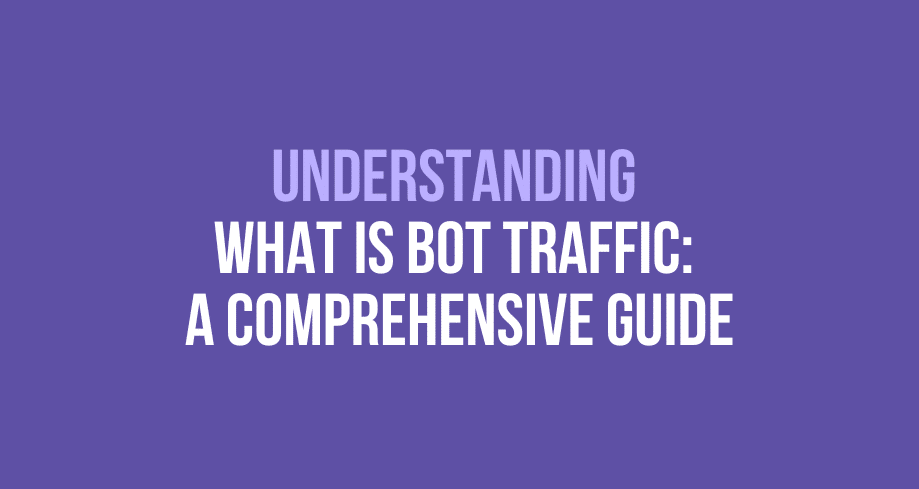Did you know that online visibility and engagement can make or break a business? It is crucial to navigate the intricate world of digital marketing wisely. One aspect that requires attention is the phenomenon of click farms. But what truly are click farms?
Click farms, although clandestine in nature, play a significant role in shaping online metrics, website rankings, and user engagement. Understanding what click farms are and how they operate is essential for marketers, advertisers, and businesses to make informed decisions and protect their interests in the dynamic digital marketing landscape.
What are click farms?
Click farms are organized networks or operations that employ either real individuals or automated bots to generate fraudulent clicks, views, likes, and other forms of online engagement. Their purpose is to manipulate online metrics and deceive search engines, social media platforms, and advertisers into believing in organic popularity and engagement.
Click farms operate by exploiting the algorithms and metrics used by online platforms. They aim to artificially inflate the number of clicks, views, likes, and shares on websites, videos, social media posts, and advertisements. This activity creates an illusion of high user engagement, which can be appealing to advertisers and businesses seeking to enhance their online presence and credibility.
What is the purpose behind click farms?
The purpose of click farms is primarily twofold.
First, they aim to manipulate online metrics and give the appearance of popularity, influence, and credibility. Higher engagement metrics can lead to better search engine rankings and increased visibility and potentially attract more organic traffic and genuine user engagement.
Second, click farms can deceive advertisers into paying for ad impressions or engagements that human users do not generate. This fraudulent activity can result in financial gain for the operators of click farms.
It is important to note that click farms are considered unethical and fraudulent practices. They undermine the integrity of online platforms, distort marketing data, and can have negative consequences for businesses and advertisers. Understanding the inner workings of click farms is crucial to protect oneself from their deceptive practices and make informed decisions regarding online marketing strategies.
Types of Click Farms
Bot Click Farms
Bot-click farms employ automated bots to generate fraudulent clicks, views, and engagement. These bots are programmed to mimic human behavior, making it difficult for algorithms to detect their artificial nature. Here’s a closer look at bot click farms:
- Use of Automated Bots: Bot click farms rely on sophisticated software or scripts that simulate human actions on websites, videos, or advertisements. These bots can be programmed to perform various actions, including clicking on links, watching videos, filling out forms, and even scrolling through web pages.
- Mimicking Human Behavior: To avoid detection, the bots in click farms are designed to replicate various aspects of human behavior. They can emulate mouse movements, click patterns, and time spent on a webpage. Some advanced bots even simulate browser and device characteristics to appear more authentic.
- The scale of Operation: Bot-click farms can operate on a large scale, generating a massive volume of fraudulent engagements within a short span. These engagements can be targeted toward specific websites, advertisements, or social media posts, giving the illusion of genuine user interest and engagement.
Human Click Farms
Human click farms involve individuals hired to manually generate fraudulent clicks, views, and engagement. These individuals are often recruited in countries with lower labor costs and paid nominal fees for their services. Here are key points about human click farms:
- Involvement of Real People: Human click farms rely on the efforts of individuals who are paid to perform various actions, such as clicking on links, watching videos, and engaging with content. These individuals are often instructed to mimic actual user behavior to avoid detection.
- Manual Click Generation: Unlike bot click farms, human click farms rely on individuals manually generating clicks and engagement. They may use multiple devices, IP addresses, or proxies to avoid being identified as a single source of fraudulent activity. Human click farms can operate at various scales, from small operations to larger networks involving numerous individuals.
- Payment for Click Generation: Individuals involved in human click farms are compensated for their efforts, although the fees are typically low. The payment models may vary, ranging from a fixed rate per click to a certain number of engagements generated. The allure of earning money through manual click generation can attract individuals in regions with limited job opportunities.
Additionally, click farmers do:
- fake reviews
- ad fraud
- fake clicks
- ad campaigns with fake news
Understanding the distinction between bot click farms and human click farms is important as it sheds light on the different mechanisms employed to manipulate online engagement. Both click farms contribute to fraudulent practices, distorting online metrics and deceiving platforms, advertisers, and businesses. Detecting and combating these fraudulent activities requires a combination of advanced analytics, vigilant monitoring, and industry cooperation.
Detecting Click Farms
Anomalous Behavior Patterns
Detecting click farms requires a keen understanding of the differences in behavior patterns between click farms and genuine users. By analyzing specific indicators, it becomes possible to identify click farm activity. Here’s an explanation of how the behavior patterns of click farms differ from genuine users and key indicators that can help in detecting click farm activity:
- Unusual Click Patterns: Click farms often exhibit unusual click patterns that deviate from those of genuine users. They may generate a disproportionately high number of clicks within a short time frame, leading to a spike in traffic that appears unnatural. This pattern may be observed across multiple pages or advertisements.
- Abnormally High Engagement Rates: Click farms may generate engagement rates that are significantly higher than what is typically seen among genuine users. This could include excessively high click-through rates (CTR), view durations, or interaction rates. Such high engagement rates may be sustained over extended periods without a corresponding increase in actual conversions or sales.
- Consistent Click Timing: Click farms may exhibit consistent timing in their click activities. For example, clicks may occur at precise intervals or follow a specific pattern throughout the day. This consistency suggests automated or coordinated actions, as opposed to natural variations in user behavior.
- Inconsistent Geographical Distribution: Click farms often operate from specific regions or countries, resulting in an unusually high concentration of traffic from those areas. This concentration may be inconsistent with the target audience or expected user demographics, raising suspicion of click-farm involvement.
- Unusual Traffic Sources: Click farms may generate traffic from unconventional or suspicious sources. This could include a high number of clicks originating from bot-infected devices, compromised websites, or proxy servers. Tracking the referral sources and IP addresses of the traffic can provide valuable insights into click farm activities.
- Lack of Conversion or Engagement Quality: Click farms generate clicks and engagements that lack meaningful conversions or genuine user interactions. For example, there may be a high number of clicks that do not result in further engagement, such as time spent on a webpage, scrolling, form submissions, or purchases. This discrepancy between clicks and genuine engagement can be indicative of click farm involvement.
- Sudden Spikes in Traffic: Click farms can cause sudden, abnormal spikes in website traffic or engagement metrics. These spikes may be unrelated to any specific marketing campaigns or genuine user interest. Monitoring and analyzing traffic patterns can help identify these sudden surges and investigate their source.
By closely monitoring these indicators and using advanced analytics tools, businesses, online platforms, and advertisers can increase their ability to detect click farm activities. Implementing robust click fraud detection systems, analyzing traffic sources, and leveraging machine learning algorithms can further enhance the detection and mitigation of click farm involvement. It is essential to stay vigilant and take proactive measures to maintain the integrity of online metrics and protect against click farm fraud.
Search Engine Penalties
Search engines take click farm activities seriously and have implemented measures to penalize websites involved in such practices. These penalties aim to maintain the integrity of search results and provide users with reliable and relevant information.
Here’s an explanation of how search engines penalize websites that farm traffic and the potential long-term consequences for businesses:
- Algorithmic Penalties: Search engines, like Google, employ sophisticated algorithms that continuously analyze a website and user behavior to detect click farm activities. When a website is identified as participating in click farms, search engines can impose algorithmic penalties. These penalties can result in a significant drop in search engine rankings and visibility, making it harder for the website to attract organic traffic.
- Manual Penalties: In addition to algorithmic penalties, search engines also have manual review processes. If a website is manually reviewed and found to be engaging in click farm activities, it can receive a manual penalty. Manual penalties are typically more severe and can result in the website being removed from search engine results entirely or having certain pages deindexed.
- Loss of Trust and Credibility: Engaging in click farm practices undermines the trust and credibility of a website. When search engines penalize a website for click farm activities, it sends a signal to users and potential customers that the website is involved in fraudulent practices. This loss of trust can significantly damage the reputation of the business.
Frequently Asked Questions
How do click farms generate fraudulent clicks and engagements?
Click farms employ various techniques to generate fraudulent clicks and engagements. Bot-click farms use automated software or bots programmed to mimic human behavior, clicking on ads, visiting websites, and interacting with content. Human click farms hire individuals (known as click farm workers) who manually generate clicks and engagements, often using multiple devices or IP addresses to avoid detection.
Can click farm activities be detected by analytics tools?
Yes, click farm activities can be detected using advanced analytics tools specifically designed for click fraud detection. These tools analyze various indicators, including abnormal click patterns, high engagement rates, inconsistent traffic sources, and lack of conversion quality.
How can websites protect themselves from click-farm activities?
Websites can take several precautions to protect themselves from click farm activities:
- Implement Bot Detection: Utilize bot detection techniques and tools to identify and block automated bot traffic that may be associated with click farms. This can involve analyzing user agent strings, mouse movements, and click patterns to distinguish bots from genuine user interactions.
- Monitor Traffic Sources: Regularly monitor and analyze traffic sources to identify any anomalies or inconsistencies. Pay attention to the geographical distribution, referral sources, IP addresses, and user agent data to detect suspicious patterns associated with click farm activities.
- Use Click Fraud Detection Tools: Invest in reputable click fraud detection tools that can provide real-time monitoring, analytics, and reporting. These tools can help identify and mitigate click farm activities by leveraging advanced algorithms and analyzing multiple metrics associated with user behavior and engagement.
Conclusion
Understanding click farms is crucial in the digital marketing landscape. Businesses and marketers should be aware of click farms and their risks. Taking necessary precautions and employing ethical digital marketing practices can help protect against click fraud, maintain credibility, and ensure genuine user engagement. By prioritizing transparency, authenticity, and legitimate strategies, businesses can build trust, foster long-term success, and contribute to a healthy and trustworthy digital ecosystem.





